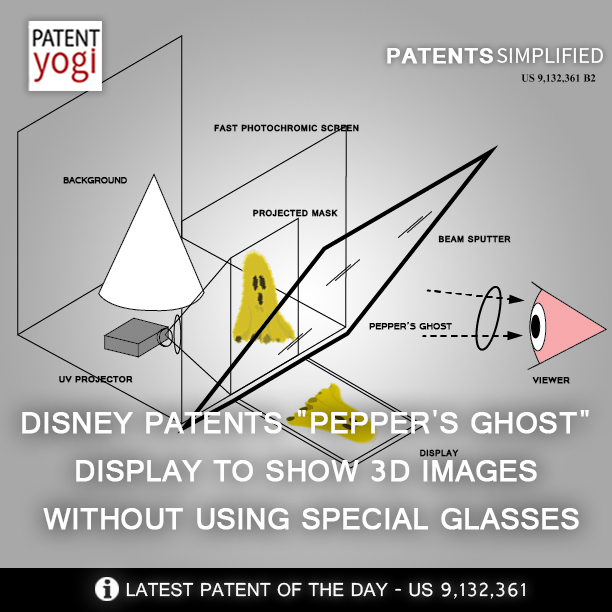There are numerous settings where it is desirable to create a unique visual display. For example, theme or amusement parks may include rides or walk-through attractions where guests (or “viewers”) are entertained by a unique visual effect or illusion. Pepper’s Ghost is an illusionary technique used by magicians, by ride or attraction designers, and others to produce a 3D illusion of a latent or ghost-like image. Using a simple piece of plate glass and special lighting techniques, Pepper’s Ghost systems can make objects appear and disappear within a scene or room.
Generally, these systems include a main room or scene that is readily viewed by a guest or viewer and a hidden room that is not visible to the viewer. Both rooms are typically identical in their physical structure including furniture and other objects except that the hidden room may include additional objects or characters such as a ghost or other character. A large piece of glass or a half-silvered mirror is situated between the viewer and the scene at an angle, such as at about 45 degrees. When the main room is lit and the hidden room is darkened, the viewer only sees the main room as the hidden room does not reflect from the glass. The sheet of glass is itself hard to see as it typically is quite large so that it extends across the entire view of the main room.
Pepper’s Ghost (e.g., the character in the hidden room) then becomes very visible to the viewer when the entire hidden room or portions such as the ghost or other character are brightly lit. Since only a portion of the light cast upon the ghost or other objects in the hidden room is reflected from the glass, the reflected images appear as latent or ghostly images relative to the objects in the main room, e.g., the reflected images or images superimposed in the visible room may appear to float. The Pepper’s Ghost image is a 3D image that may be a still image or animation may be provided such as with animatronics providing the “ghost” or by placing a live actor in the hidden room. In many systems, a 2D display is used as these displays are more dynamic and controllable and do not require a live actor or expensive animatronics. However, this results in a 2D image or flat object being positioned within a 3D set, e.g., the main room of the Pepper’s Ghost display. In a broad sense, the Pepper’s Ghost systems may be thought of as implementing autostereoscopy, which is generally a method of displaying 3D images that can be viewed without the use of headgear or glasses on the part of the user.
Patent Information
Patent Number: 9,132,361
Patent Title: Projectable masks
Inventors: Smithwick; Quinn Y. (Pasadena, CA)
Assignee: DISNEY ENTERPRISES, INC. (Burbank, CA)
Family ID: 1000001338849
Appl. No.: 13/889,077
Filed: May 7, 2013
Abstract: A display assembly for displaying a virtual image of an object with occlusion and contrast. The display assembly includes a virtual object display selectively displaying an image at a virtual object plane. The display assembly includes a mask generation screen assembly with a screen element operable in a first state in which the screen element is transparent to visible light and in a second state in which a portion is opaque. The screen element is positioned proximate to the virtual object plane. The opaque portion of the screen element corresponds in size, shape, and location to the displayed virtual object image to provide a mask for the virtual image. The screen element may include a projectable mask screen opaque in regions exposed to a predefined type of non-visible light. The non-visible light may be ultraviolet (UV) light or infrared (IR) light selectively provided by a UV or IR projector.


